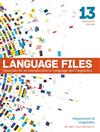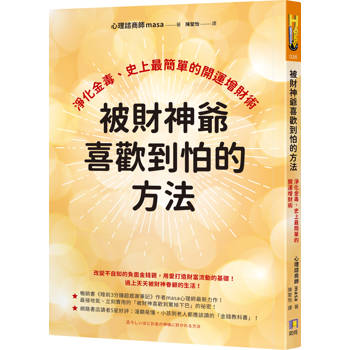| FindBook |
有 3 項符合
Language Files:Materials for an Introduction to Language and Linguistics, 13/e的圖書 |
 |
Language Files:Materials for an Introduction to Language and Linguistics, 13/e 作者:Ohio State University Press 出版社:OHIO STATE UNIVERSITY PRESS 出版日期:2022-10-01 語言:繁體書 |
| 圖書選購 |
| 型式 | 價格 | 供應商 | 所屬目錄 | $ 632 |
中文書 |
$ 632 |
英文 |
$ 720 |
語言學習 |
|---|
| 圖書館借閱 |
| 國家圖書館 | 全國圖書書目資訊網 | 國立公共資訊圖書館 | 電子書服務平台 | MetaCat 跨館整合查詢 |
| 臺北市立圖書館 | 新北市立圖書館 | 基隆市公共圖書館 | 桃園市立圖書館 | 新竹縣公共圖書館 |
| 苗栗縣立圖書館 | 臺中市立圖書館 | 彰化縣公共圖書館 | 南投縣文化局 | 雲林縣公共圖書館 |
| 嘉義縣圖書館 | 臺南市立圖書館 | 高雄市立圖書館 | 屏東縣公共圖書館 | 宜蘭縣公共圖書館 |
| 花蓮縣文化局 | 臺東縣文化處 |
|
|
"書籍簡介
Language Files 內容豐富,自1970年代出版以來,成為最廣受採用、諮詢的權威語言學教材,獲美國各大學相關課程指定教材或主要參考書。本書內容屢經增修,與時俱進,是市場上涵蓋層面最廣泛、最權威的語言學導論教科書。
新版內容經全面修訂,各章皆由該領域語言學權威撰寫,內容專業,因此除語言學導論外,也適用於其他語言學相關課程。此外編排方式不僅考慮到學生的需求與興趣,各章節的獨立完整,更提供了教師課程設計極大的彈性。
產品特色
* 針對語音、音韻 (phonology)、語用等科目,和心理語言學的章節大幅更新。
* 結合近期大腦與語言的研究,擴充有關語言障礙的篇幅。
* 新增練習,附加網頁連結到和語言學相關的音檔及網上資源,較前版本內容更多。
13/e 修訂部分簡介: (與 12/e 詳細差異,請參考附件: Preface to the Thirteenth Edition)
* 新版主要修訂的部分包括對構詞學中的同位異形 (allomorphy) 更深入討論,並增加了模板構詞、超音段構詞和構詞音位變換等部分,讓學生能更全面地認識所有構詞現象。
* 新增語言與電腦,介紹深度學習、人工神經網路和計算語言學等相關領域,讓讀者了解這些快速發展領域中的最新研究和應用。
* 附語言學小詞典及最新 IPA 符號表;練習和建議閱讀清單全面更新。
Language Files Materials for an Introduction to Language and Linguistics, 13/e has become one of the most widely adopted, consulted, and authoritative introductory textbooks to linguistics ever written. The scope of the text makes it suitable for use in a wide range of courses, while its unique organization into student-friendly, self-contained sections allows for tremendous flexibility in course design.
New in the 13th edition:
The thirteenth edition has been revised, clarified, and updated throughout to ensure that it remains the most comprehensive and accessible introductory linguistics textbook on the market. The revised chapter on morphology includes a more thorough discussion of allomorphy and adds sections on templatic morphology, suprasegmental morphology, and morphological metathesis to give students a more complete picture of all morphological phenomena. The chapter on language and computers has been updated with new sections on deep learning, artificial neural networks, and on other areas of computational linguistics, providing readers with a better sense of current research and applications in this rapidly developing field. Other additions include new sections on syntactic non-constituents and non-generative rule systems in the syntax chapter and a complete rewrite to the creole languages file in the language contact chapter. We have also adopted the use of the singular they when referring to a generic person whose gender is unknown or irrelevant. Exercises and lists of other readings have been updated throughout."
作者簡介:
"The Department of Linguistics at The Ohio University
俄亥俄大學語言學系成立於1963年,是世界著名的計算語言學、描述、理論和實驗語言學重鎮。
The Department of Linguistics at The Ohio University
Founded in 1963, is world renowned for its programs in computational, descriptive, theoretical, and experimental linguistics."
1. Introduction 導言
2. Phonetics 語音學
3. Phonology 音韻學
4. Morphology 構詞學
5. Syntax 句法學
6. Semantics 語意學
7. Pragmatics 語用學
8. Language Acquisition 語言學習裝置
9. Psycholinguistics 心理語言學
10. Language Variation 語言變異
11. Language and Culture 語言與文化
12. Language Contact 語際接觸
13. Language Change 語言演變
14. Animal Communication 動物溝通
15. Writing Systems 書寫系統
16. Language and Computers 語言和電腦
17. Practical Applications 實際應用"
高中英文句型 學測中譯英高分總攻略(AI 學習版)
A++英語 國中英文閱讀:拆解式學習,用48個多元主題,強化閱讀素養,高分通
歡迎光臨,諺語動物園
Step by Step 圖解狄克生片語:一本學會470個關鍵日常英文片語(加贈寂天雲Mebook單字學習APP)
SoR腦科學背單字工具組(拼讀字典:發音拼讀二合一、遮字卡、點讀筆)
我的第一本印尼語課本:自學、教學都適用!最多第二外語、語言中心、網路課程指定教材!(附QR碼線上音檔)
九宮格日語學習法:零散的日文單字立刻變身有系統的視覺圖像記憶【修訂版】(附QR Code雲端音檔)
國高中英文單字加深加廣:﹝圖解+敘事﹞精選會考又實用的單字,解決看圖寫作及描述圖片的難題!快速擴充單字量,英文口說寫作能力同步提升!(附QR 碼線上音檔)
分類主題實用搭配詞:10大核心動詞X30大情境主題,日常生活到職場商務,各檢定考試的高分關鍵!(附QR碼線上音檔)
|











